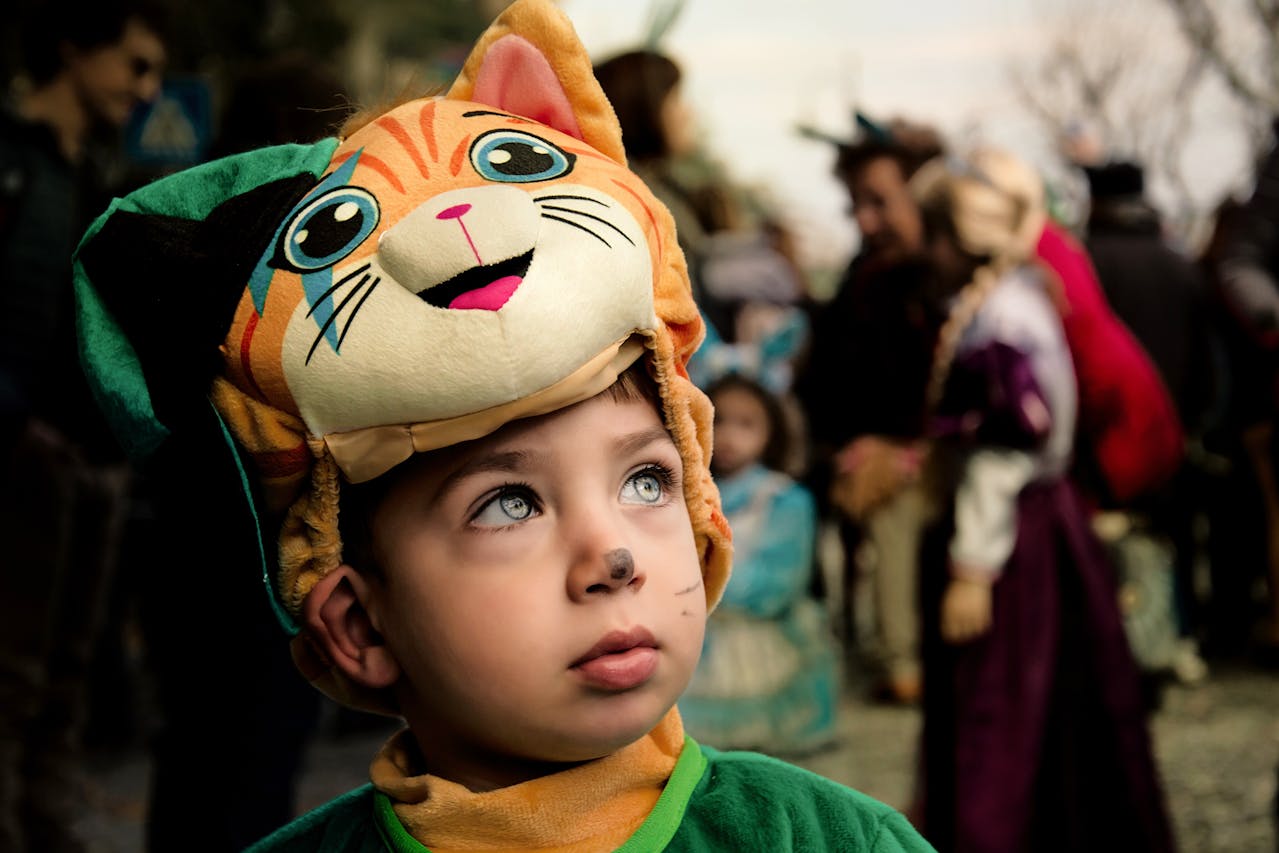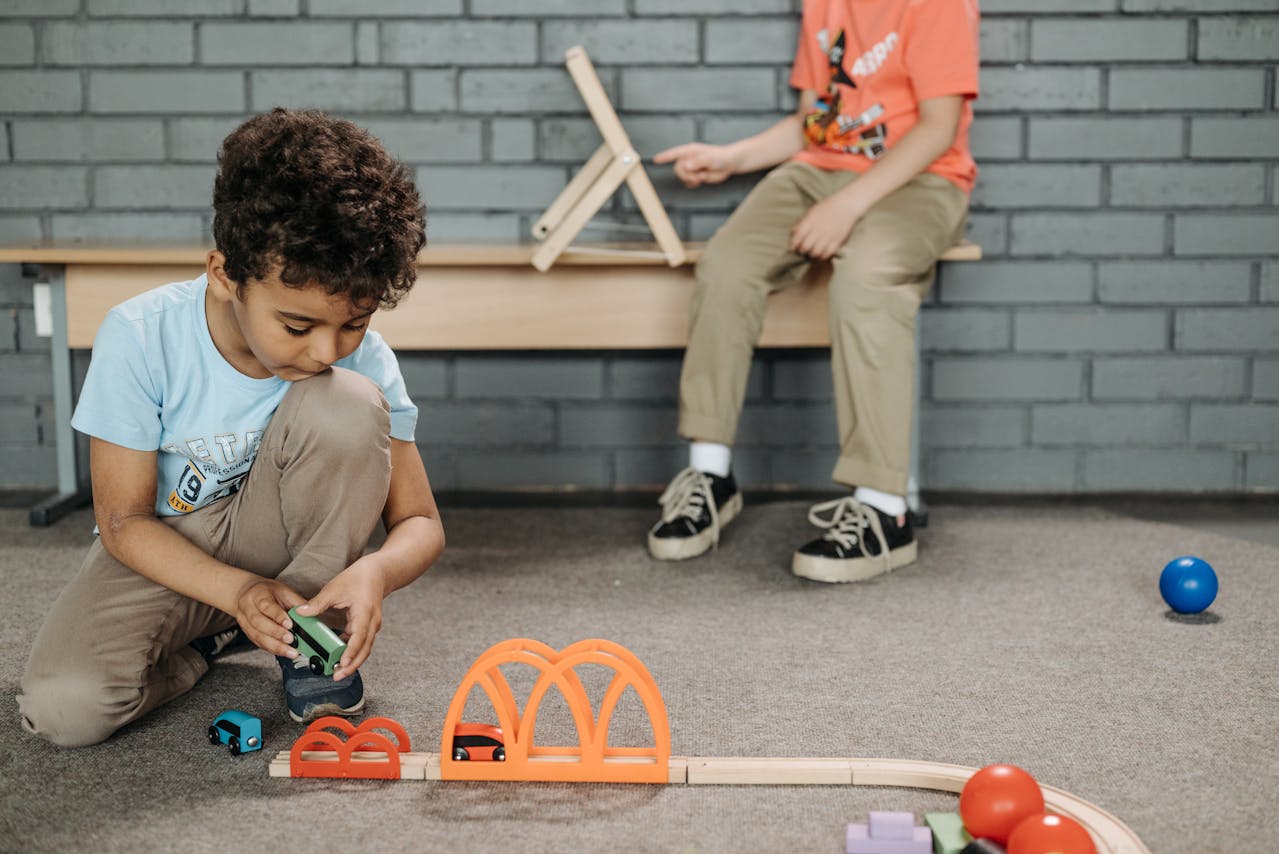Puglia is steeped in history, with layers of culture that stretch from the Messapian era through the Roman Empire and beyond. For families traveling with kids, exploring the region’s cultural and historical sites can be not only educational, but also genuinely fun—when done right. The key is to choose destinations that spark imagination, offer interactive elements, or allow kids to physically move through space: climb towers, explore narrow alleyways, ride little tourist trains, or peer into secret caves. Across Salento and the Valle d’Itria, you’ll find a rich mix of sights that appeal to children as much as adults.
Alberobello – The Trulli Village
Walking through Alberobello is like stepping into the pages of a fairy tale. According to local legend, the dry-stone trulli were originally built without mortar so they could be easily dismantled when the tax collector came around—a clever loophole to avoid paying property taxes to the Kingdom of Naples. This quirky origin story only adds to their magical appearance and makes the town feel even more like a place out of folklore. This UNESCO World Heritage town is famous for its trulli — whitewashed stone huts topped with conical roofs that resemble hobbit houses. Kids are enchanted by the unusual shapes, and love spotting the mysterious symbols painted on the rooftops (which are thought to be religious or astrological).
You can peek inside a few trulli that have been transformed into small museums or artisan shops, such as Trullo Sovrano, the only two-story trullo in town. There’s also a small tourist train that loops through the historic district—a welcome break for little legs and a hit with younger kids. Alberobello is easy to navigate on foot, though strollers are best left behind due to uneven stone paths. Parking lots are located just outside the old town.
Otranto & Gallipoli – Castles by the Sea
Puglia’s coastline is dotted with castles that once protected the region from sea-faring invaders—and today they serve as epic backdrops for make-believe knights, pirates, and adventurers.
In Otranto, the imposing Aragonese Castle invites kids to climb its towers and discover a real-life tale of invasion and resilience. In 1480, the city faced a brutal siege by the Ottoman Empire, who stormed Otranto’s walls and overtook the city. Legend holds that 800 locals refused to convert and were executed on a nearby hill, now honored as the Martyrs of Otranto. The castle was later expanded to defend against future attacks, and exploring its ramparts gives children a sense of that dramatic chapter in Puglia’s history. and walk along thick stone walls with sea views. Inside, the castle hosts art exhibitions and cultural events (including in past seasons, a popular Frida Kahlo exhibit). The fortress is big enough for kids to roam and explore, and the cool stone interiors offer a bit of shade on hot days.
Over in Gallipoli, the 13th-century castle sits dramatically at the edge of the old town, surrounded by water on three sides. While it has minimal signage or exhibits, it offers tons of space for imagination and discovery, with open walkways and hidden corners to explore. Safety railings are present but supervision is advised, especially with younger children. Both castles usually have modest entry fees (~€5) and can be visited in under an hour, making them manageable even for toddlers.
Lecce – The Baroque City and Beyond
Lecce, often dubbed the “Florence of the South,” is a beautiful and compact city shaped by its rich Baroque heritage. Much of this distinctive architecture blossomed in the 17th century, when the soft local limestone made it easy for artisans to carve elaborate facades filled with cherubs, saints, and floral patterns. According to local lore, Lecce owes part of its protection and success to Saint Oronzo, the city’s patron saint, who is said to have miraculously saved the city from a plague—his statue now watches over Piazza Sant’Oronzo from atop a tall column. packed with ornate architecture and kid-friendly treasures. Begin in Piazza Sant’Oronzo, where an ancient Roman amphitheater sits in the center of town. Children are usually amazed to learn that gladiators once fought there.
Not far away, Castello Carlo V, with its moat and massive walls, often hosts family-friendly events, and even when exhibits aren’t on, the grounds are worth exploring. As you stroll through Lecce’s pedestrian lanes, turn it into a scavenger hunt: see who can spot the funniest gargoyle or cherub carved into the elaborate Baroque facades.
For crafty kids, Lecce is also famous for papier-mâché art. Some workshops or studios (especially along Via Palmieri) offer demonstrations of how statues are shaped and painted. For a full creative experience, end the visit at the Museo dei Bambini di Lecce, a new children’s museum designed for hands-on learning and play. With building blocks, pretend play zones, and rotating interactive exhibits, it’s a wonderful indoor space for a quiet break or afternoon of discovery. There’s even a food area with light bites, making it a good lunch or snack stop before heading back out.
Ostuni – A Whitewashed Maze
Ostuni, the “White City,” is perched high on a hill and traditionally painted in white to reflect sunlight and, according to local lore, to prevent the spread of disease during plague outbreaks. The gleaming facades also help cool the buildings in the region’s hot summers and painted entirely in white, giving it a dreamy, glowing appearance. Kids will love exploring its narrow alleyways and staircases, which feel like a giant maze. One fun challenge: count the steps on the way to the Ostuni Cathedral at the top.
Families can take in sweeping views of olive groves and the Adriatic Sea from the ancient city walls. In the evening, Ostuni is full of energy, with buskers, toy vendors, and food carts in the main piazza. For a fun and relaxing tour, hop aboard an Ape Calessino, a small three-wheeled tuk-tuk that weaves through the city’s winding streets. This is especially handy for families with young kids or tired feet. If you need a play break, there’s a small playground in the newer part of town, Parco Rimembranze, just a short walk from the historic center.
Gallipoli – Fish Market and Sea Walks
For a sensory-rich experience, visit Gallipoli’s fish market, best explored in the morning. Once one of Europe’s major exporters of olive oil, Gallipoli’s old town was filled with underground oil mills carved into limestone, where lamp oil was pressed and stored before being shipped across the continent. Some of these former frantoi ipogei (underground mills) are open to visitors today, offering a glimpse into the town’s industrious past. While today Gallipoli is best known for seafood, this hidden layer of history adds an unexpected twist to your visit. Children can see fishermen unloading the daily catch, from octopus to glistening sea bass. Even picky eaters are intrigued by the sight of live seafood wriggling on display.
After the market, wander Gallipoli’s old town, where narrow streets lead to artisan shops selling ceramics or handmade nets. Kids will enjoy walking along the sea bastions, often catching glimpses of swimmers leaping into the sea. The breeze and ocean views make it a refreshing part of the day. If you’re looking to extend your visit indoors, check out the Aquarium of Salento, a small but engaging spot with Mediterranean marine life that’s great for younger kids.
Many local restaurants are kid-friendly and happy to prepare simple pasta dishes alongside seafood specialties. Don’t be afraid to ask for “pasta al pomodoro” or “plain spaghetti” if that’s what your child prefers.
Ancient Messapian Sites – Ruins and Sea Views
For families with older children or teens interested in ancient history, the Messapian ruins in Puglia offer a chance to connect with the region’s pre-Roman past—and often come wrapped in local legend. One of the most magical spots is Grotta della Poesia, near Roca Vecchia, whose name means “Cave of Poetry.” According to myth, a beautiful princess once bathed there, and poets from all over would gather on the rocks to compose verses in her honor. That enchanting blend of sea and story still makes the place feel special today. the Messapian ruins in Puglia offer a chance to connect with the region’s pre-Roman past. Parco Archeologico di Egnazia near Fasano features a mix of archaeological ruins and a museum, showcasing ancient tombs, roads, and even remnants of early settlements.
Along the Adriatic coast, Roca Vecchia is home to the poetic Grotta della Poesia, a sea-carved natural swimming pool surrounded by ruins. While these sites don’t offer interactive exhibits, kids can enjoy running through old stone paths, imagining what once stood there. The proximity to the sea also means you can mix history with a quick dip—just bring swimsuits and plenty of water, as there is little shade.
Conclusion
Cultural travel with kids doesn’t have to mean dragging them through quiet museums. In Puglia, history is lived in the streets, the towers, and even the sea. With a little planning, families can experience castles, ancient ruins, storybook towns, and hands-on exhibits that light up young minds. Whether you’re stepping into a trullo in Alberobello, crafting papier-mâché in Lecce, or watching fishing boats unload in Gallipoli, you’ll find that Puglia’s history isn’t just something to learn—it’s something to feel, touch, and play your way through.



